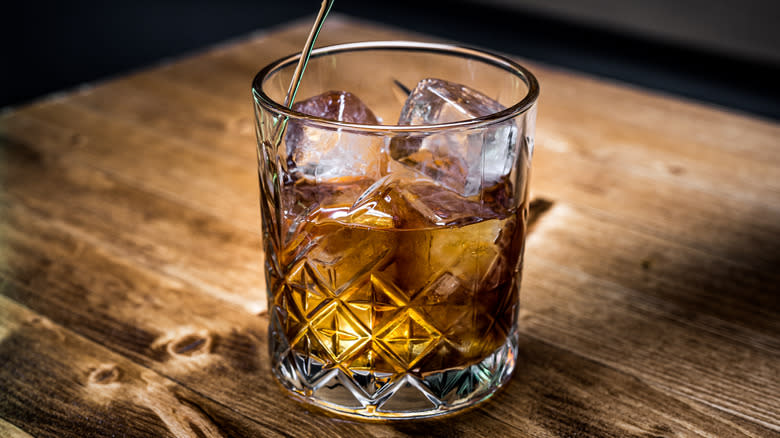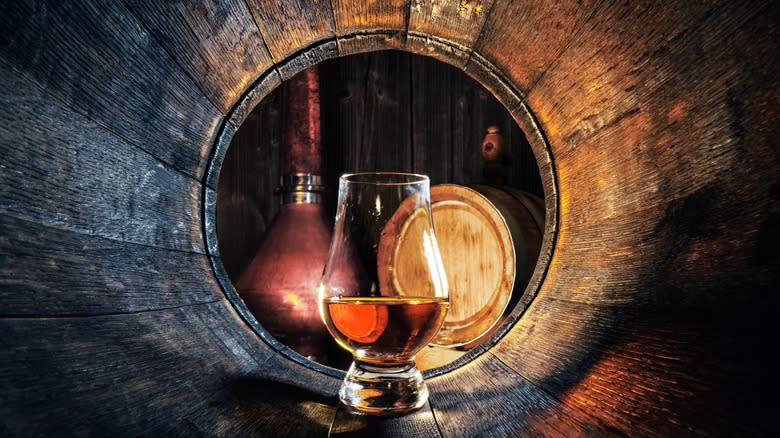Why Is Whiskey The Color Of Caramel?

No matter what type of whiskey you get, you can usually count on it having a rich, caramel hue. This may seem confusing, since most spirits tend to be clear unless they've been infused with something else, like in the case of spiced rum or sloe gin. Whiskey can come in all sorts of different flavors, but these aren't what give it that amber sheen.
Whiskey -- much like its grain-based counterparts, vodka and gin -- is clear after distillation. Its color comes during the aging process, in which the wooden barrel used for storage transfers pigments (as well as its earthy aroma and taste) to the liquid inside. Naturally, this means that, the longer whiskey ages in a barrel, the darker it will be, with shades varying from pale gold to reddish umber to deep treacle.
An even darker whiskey can be achieved through charring, a process in which the barrel is exposed to intense heat for up to a minute, depending on the distiller's preference. Some whiskeys, such as bourbon, are required to be made in a charred barrel, but this process is not universal. Charring is said to heighten the infusion of the wood's sweeter notes, leaving you with an end product that's not only darker but also more flavorful.
Read more: Popular Vodka Brands Ranked From Worst To Best
Types Of Wood Used For Aging Whiskey

The type of wood used to age a whiskey will also influence its color, but this influence doesn't stop there. Most whiskeys are aged in oak barrels because of the bark's distinct flavor — Gallic acid from European oak provides spice, while vanillins in American white oak fittingly lend the spirit a vanilla flavor. Some whiskeys, like scotch, have to be matured in oak casks for at least three years to earn the categorization.
While oak is by far the most common wood used to age whiskey (why fix something that isn't broken?), some categorizations allow for a bit of wiggle room. Irish and Canadian whiskies, for example, don't specify what type of wood should be used, which has led some to experiment. Method and Madness whiskey, for example, is aged in French chestnut barrels, and the brand behind this claims on its website that the product contains notes of spice and ripe banana, among other things.
It's even possible to find a white whiskey if you look hard enough. Also known as "new" whiskey, this powerful stuff skips the aging step altogether and is sometimes compared to moonshine because of its color and strength.
Read the original article on Mashed.

